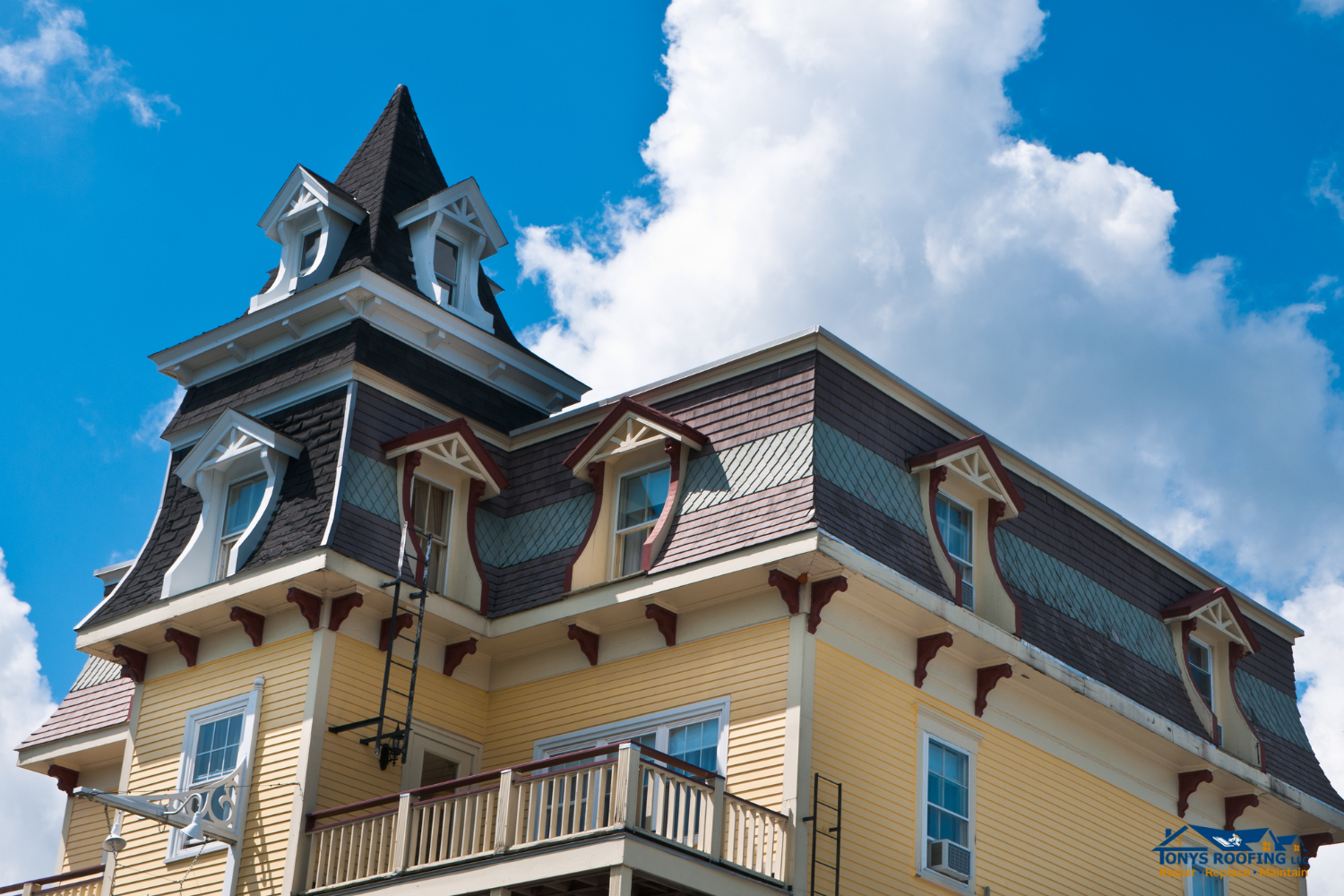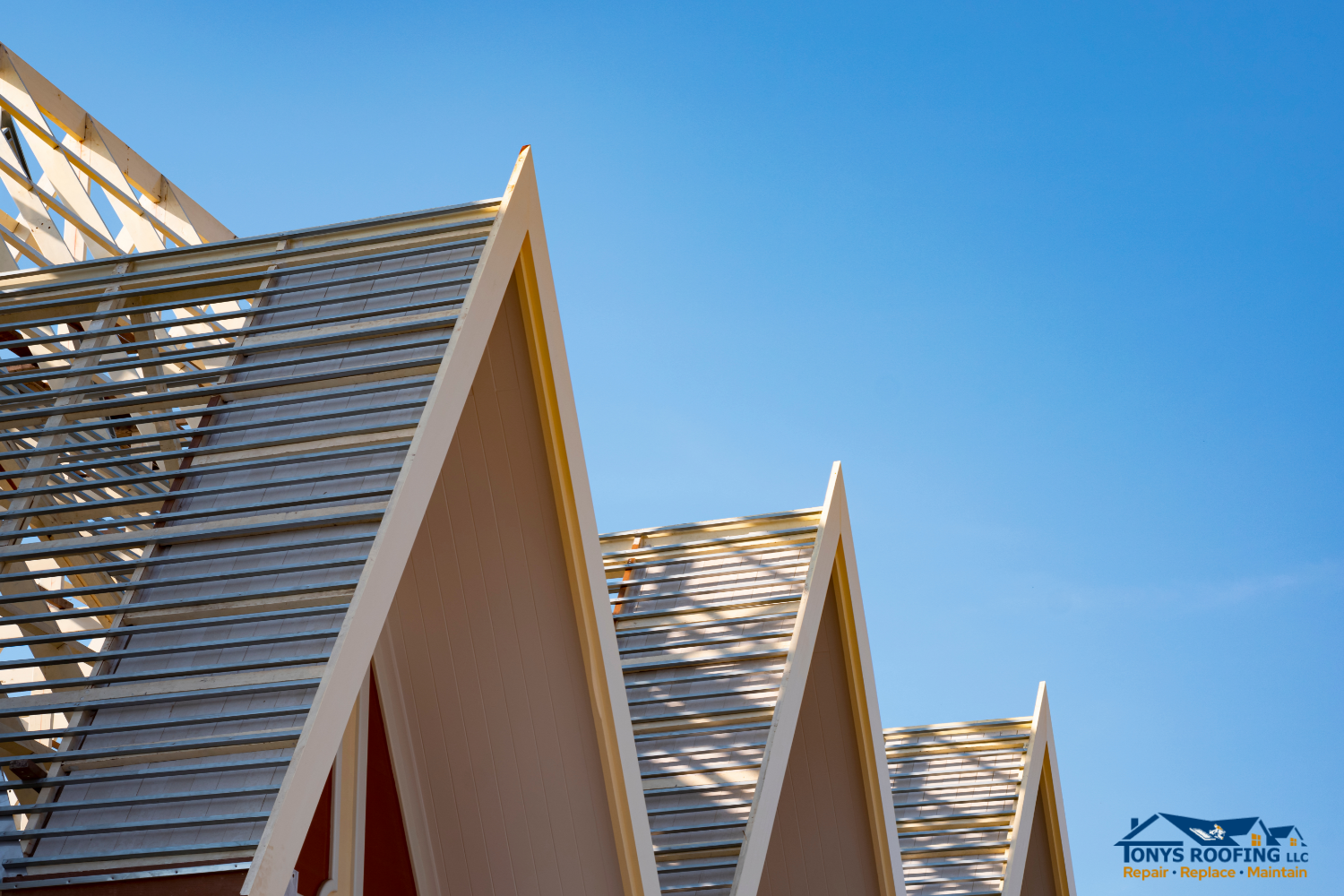The roof of a building is not only a functional necessity but also a design element that can significantly impact the overall aesthetics and functionality of a structure. In this blog post, we’ll take a closer look at the various types of roofs, ranging from traditional styles that have stood the test of time to modern, innovative designs that cater to specific needs and preferences.
Gable Roof
The gable roof is one of the most recognizable and classic roof styles. It features two sloping sides that meet at a central ridge, forming a triangular shape. Gable roofs are known for their simplicity and excellent water runoff properties. They are commonly found on residential homes and various architectural styles.
Hip Roof
Hip roofs are characterized by slopes on all four sides that meet at the top to form a ridge. These roofs are highly stable and provide extra living space in the form of an attic or a vaulted ceiling. Hip roofs are often seen on cottages, bungalows, and some ranch-style homes.
Mansard Roof
Also known as a French roof, the Mansard roof is a four-sided roof with two distinct slopes on each side. The lower slope is steeper, while the upper one is shallower. Mansard roofs offer additional living space in the attic and are frequently used in Second Empire-style architecture.
Flat Roof
Flat roofs have minimal to no slope, giving them a completely horizontal appearance. While they are commonly seen on modern commercial buildings and apartments, they can also be found in contemporary residential architecture. Flat roofs allow for rooftop gardens and outdoor living spaces.
Gambrel Roof
Gambrel roofs have a similar shape to Mansard roofs but are characterized by two different slopes on each side. The lower slope is steeper, while the upper slope is less steep. These roofs are often associated with barns and Dutch Colonial-style homes.
Shed Roof
Shed roofs are simple, single-sloped roofs that slope in one direction. They are commonly used for additions, porches, and modern minimalist designs. Shed roofs are easy to construct and provide excellent drainage.
Butterfly Roof
The butterfly roof is a modern and striking design that resembles the wings of a butterfly in flight. It features two upward-sloping roof sections that meet at the center. This design allows for unique interior spaces with tall, angled ceilings and large windows, making it popular in contemporary architecture.
Green Roof
Green roofs, also known as living roofs, are designed to support vegetation, adding an eco-friendly and aesthetically pleasing element to buildings. They provide insulation, reduce stormwater runoff, and contribute to urban biodiversity.
Skillion Roof
A skillion roof, also called a shed roof or a mono-pitched roof, is a single-sloped roof that slopes in one direction only. It’s a popular choice for modern and minimalist designs, offering a sleek and clean look.

Dome Roof
Dome roofs are characterized by their rounded, often hemispherical shape. They are both visually striking and structurally sound. Dome roofs can be found in various architectural styles, from ancient Roman buildings to modern sports stadiums.
Conclusion
The choice of roof design can significantly impact the aesthetics, functionality, and overall character of a building. Whether you opt for a classic gable roof, a contemporary butterfly roof, or a green roof that contributes to sustainability, each type of roof has its unique advantages and can be tailored to meet your specific needs and architectural preferences. When planning a construction project, it’s essential to consider both the practical and aesthetic aspects of the roof to create a harmonious and functional structure.




